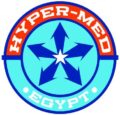AT HYPERMED YOUR HEALTH IS OUR CONCERN
HBOT AND GAS GANGRENE
Clostridial myostitis and myonecrosis (gas gangrene)
Gas gangrene is one of the most dreaded complications associated with open
wounds, but it may also occur spontaneously in the presence of malignancy and as a
complication of surgery . Untreated, it invariably results in death within 48 hours of
the onset of symptoms. Originally associated with contaminated war wounds, gas
gangrene now has become almost exclusively a disease of the civilian population.
Hart estimates there are 1,000 to 3,000 annual cases of gas gangrene in the United
States. In a review of several published series, he found 49% of cases are
posttraumatic, 35% postoperative, and 16% arise spontaneously. The treatment
of gas gangrene and other anaerobic infections began in Amsterdam in 1960 and a
subsequent case-series reported exceptional results. In the year 2000, Korhonen
published an article on HBO2 in acute necrotizing infections with special reference to
the effects on tissue gas tensions, and showed that “HBOT resulted in a marked
increase in tissue oxygenation in both healthy tissue and in the vicinity of infected
tissue. The hyperoxygenated tissue zone surrounding the infected area may be of
significance in preventing the extension of invading microorganisms. HBO2 was
also proven to inhibit alpha-toxin production, which has a direct link to patient
morbidity and mortality.
. Of course, by itself HBO is useless – it must be
combined with aggressive debridement and meticulous haemostasis to be of
therapeutic value. Surgery should be delayed until after the first HBO treatment. This
allows for the administration of antibiotics, treatment of electrolyte and fluid
imbalances, provides better surgical demarcation of necrotic tissue, and makes the
patient less toxic and decreases the surgical risk.
Get Started Today
Contact Us for Immediate Assistance
Reach out now to schedule your consultation or emergency services with our dedicated medical team at Hypermed.
